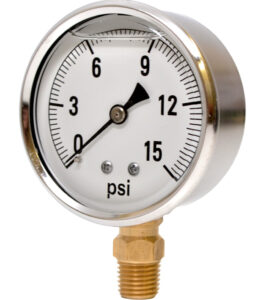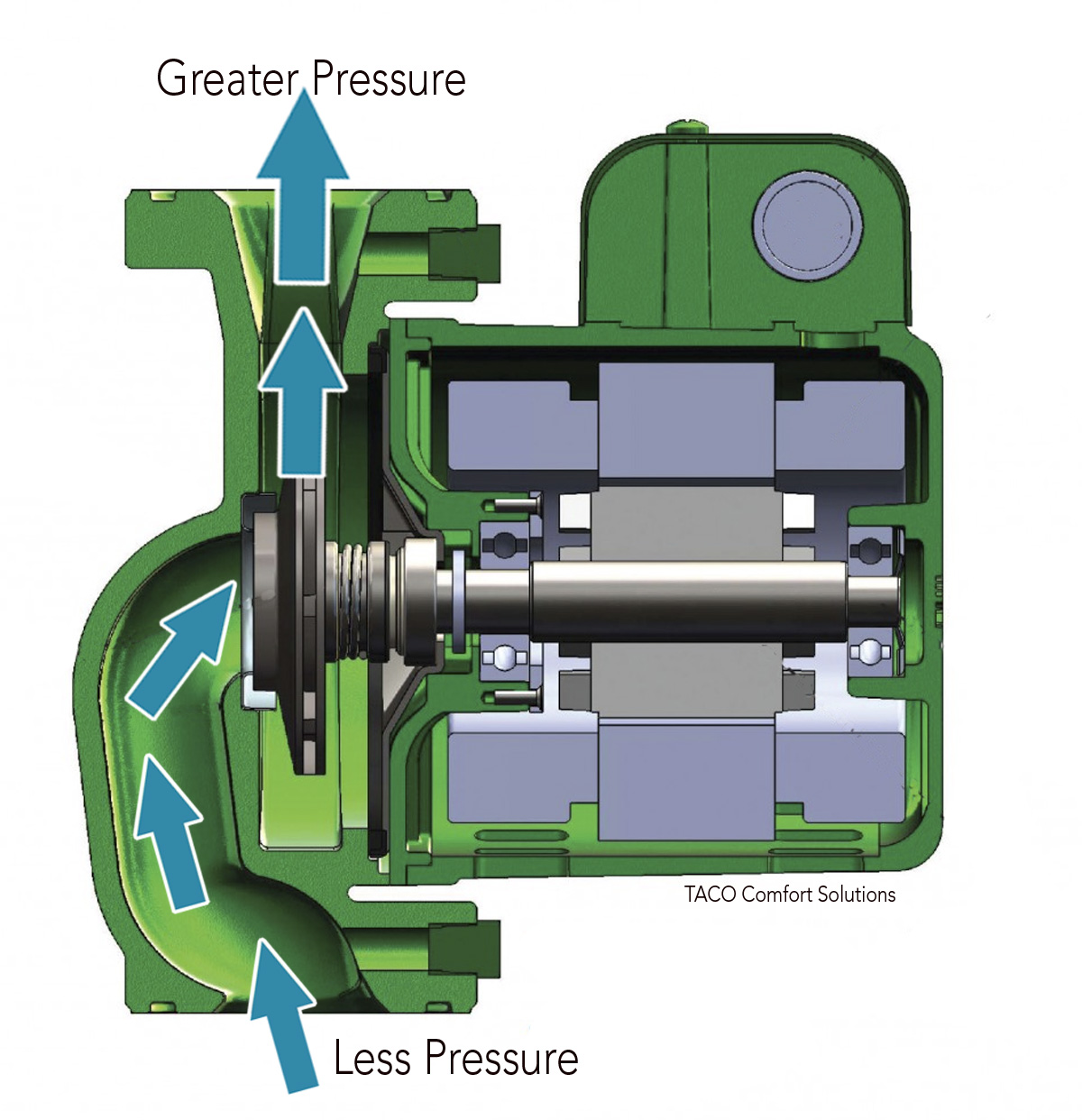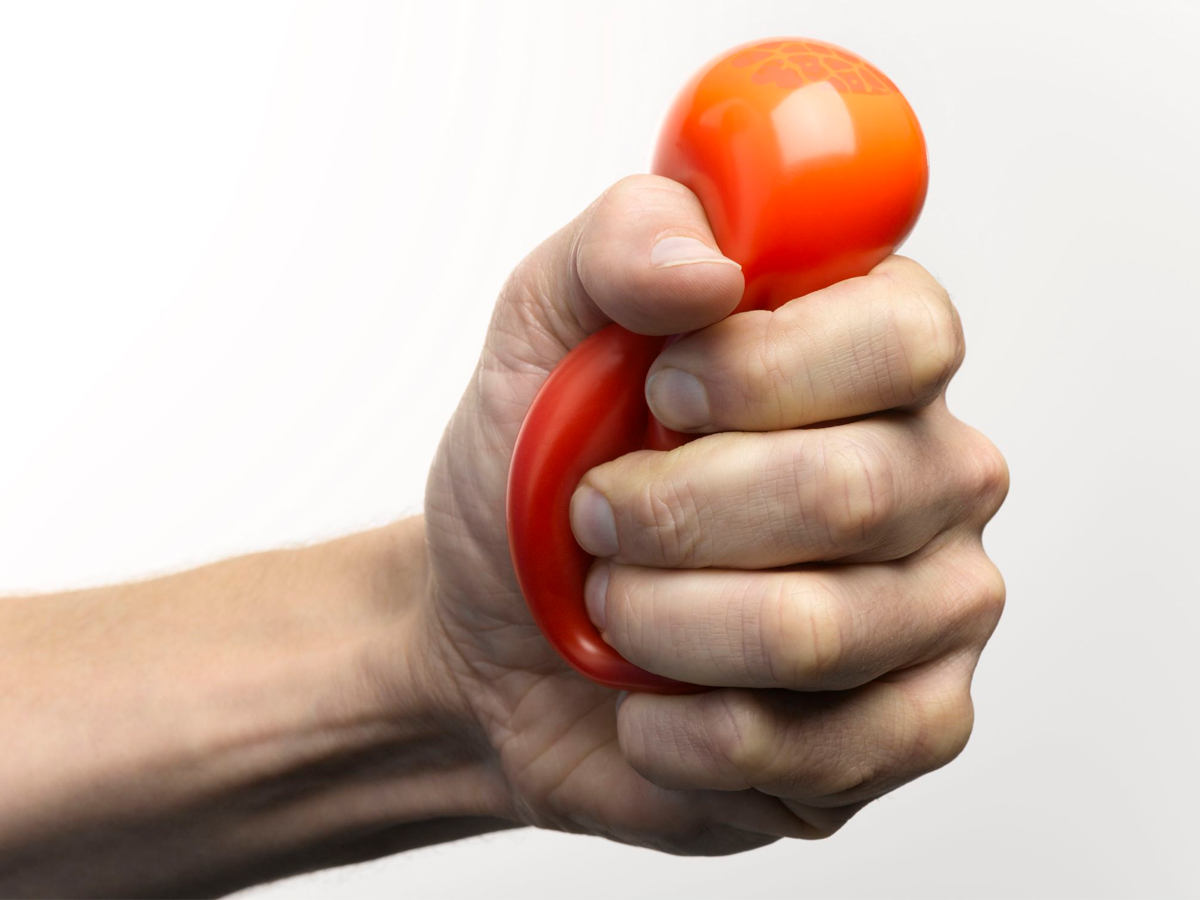The Point of No Pressure Change
Written on: November 1, 2018 by George Carey
There was a man named Gil Carlson who worked at Bell & Gossett. He eventually became known as the “Father of Modern Hydronics.” He invented products and developed various theories and applications that today we consider standard procedures. His most important discovery was the “Point of No Pressure Change.” This subject deals with the importance of proper pump location in a closed hydronic system.

A gauge would register one pound per inch if you placed it at the bottom of a column of water 28 inches high.
What is meant by the proper location of a circulator in a closed system? The circulators in the system should be located so they are “pumping away” from the expansion tank. Installed in this manner, when the circulator turns on, the pressure differential that it develops will be added to the system’s static pressure. The static pressure is the pressure that exists throughout the system when the circulator is off. It is simply the weight of water. If you were to place a gauge at the bottom of a column of water 28″ high, the gauge would register 1 psi. That is one pound of pressure per square inch.
When centrifugal pumps are used in closed, pressurized hydronic systems, they are referred to as circulators. The reason is the circulator is not pushing or pulling the water around the system, but rather it is circulating the water through the system. The circulator does not create pressure, only pressure differential. In addition, the pressure on the discharge side of the circulator has to be higher than the pressure found on its inlet side.
Remember the old saying, “high pressure goes to low pressure?” In a hydronic system, think of it this way—the system is a closed, pressurized wheel. When the circulator is off, the water does not circulate through the wheel. However, when the circulator turns on, it upsets the balance that existed. The direction the water flows is determined by the higher pressure found on the discharge side of the circulator. The key difference between pressure and pressure differential is when the circulator turns “on,” the circulator does not care if its discharge pressure increases or if its suction pressure drops, so long as the pressure on the discharge side of the circulator is higher than the pressure on its suction side. Because there is a difference in pressure across the circulator, the water in the system circulates! In fact, all the water in the piping circuit moves instantly. That is because water is not compressible, so when the circulator comes on, it upsets the balance that existed in the circuit and all the water circulates.
If the water in this closed hydronic system is going to circulate regardless of whether the circulator is on the supply or return, why all the fuss about its location? The answer has to do with how the circulator can change the system’s static pressure. If the circulator is located on the supply, pumping away from the expansion tank, the system’s pressure will be increased. If the circulator is located on the return, pumping towards the expansion tank, the pressure in the system will be decreased. This drop in pressure can cause all sorts of problems.

The direction water flows is determined by the higher pressure
found on the discharge side of the circulator.
Air that is entrained in water, when exposed to a lower pressure, will come out of solution in the form of bubbles. This can cause gurgling noises, a reduction in heat transfer efficiency and quite possibly air-binding of radiation, requiring a service call to purge the air. If the circulator’s pressure differential is high, it can drop the system’s pressure on the top floor into a vacuum. Of course, any floats exposed to vacuum will draw air into the system. How big does that circulator need to be to cause this situation? It depends on each individual job, but typically, the type of circulators found in most commercial jobs, such as apartment buildings, office buildings and churches. Any commercial accounts could have one of these circulators.
Point of NO Pressure Change
Why can’t the circulator change the system’s pressure at the point where the expansion tank connects to the system? This is a question asked often, both in the field and at our hydronic seminars. Boyle’s Law says that if you have a gas (air) trapped in a tank (expansion tank), its volume will shrink if you add pressure to it. Likewise, its volume will expand if the pressure is lowered. In other words, if you squeeze a gas, its pressure will rise and conversely, if you let the gas expand, its pressure will drop. How does all of this relate to hydronic systems?
To change the pressure in the expansion tank (diaphragm or steel), you have to squeeze the air that is in there. When the boiler heats the water in the system, the water expands, compressing the air in the expansion tank. This causes an increase in the system’s pressure, which you can see on the gauge of the boiler. When you open the fill valve to add more water to the system, the additional water enters into the expansion tank because the piping is already filled with water, compressing the air, causing a rise in system pressure that is indicated on the boiler’s gauge.
When a circulator turns on, does it heat the water? Does it add more water to the system? Or does it just circulate the water? Can you see the difference? If there is no change in volume or temperature of the water, there can’t be a change in its pressure.

According to Boyle’s Law, if a gas is squeezed, its pressure will rise; if a gas is expanded, its pressure will drop.
If the circulator is pumping away from the expansion tank, can it take water out of the tank? If you think yes, where would you put it? The piping is already filled and you can’t compress water. If the circulator is pumping towards the expansion tank, can it put water into the tank? Air is compressible, so water can enter the tank. However, where would the water come from? If you think it can come from the piping circuit, then that means there would be a void in the piping circuit. Mother Nature hates a vacuum (void)!
No, when a circulator comes on, it can neither add nor remove water from the expansion tank. If it can’t change the volume of the water in the tank, it can’t change the volume of the air (gas) in the tank. This means it can’t change the pressure in the tank or the piping connecting the tank to the system.
Every time a circulator turns on, it “looks” for this point. Depending upon whether it’s pumping away or towards the expansion tank, it either increases its discharge pressure or drops its suction pressure. This is why since the 1960s, when Gil Carlson wrote his famous paper on the “Point of No Pressure Change,” circulators should be located on the supply “pumping away” from the expansion tank. ICM
If you have any questions or comments, e-mail me at gcarey@fiainc.com or call me at FIA 1-800-423-7187 or follow me on Twitter at @Ask_Gcarey.


